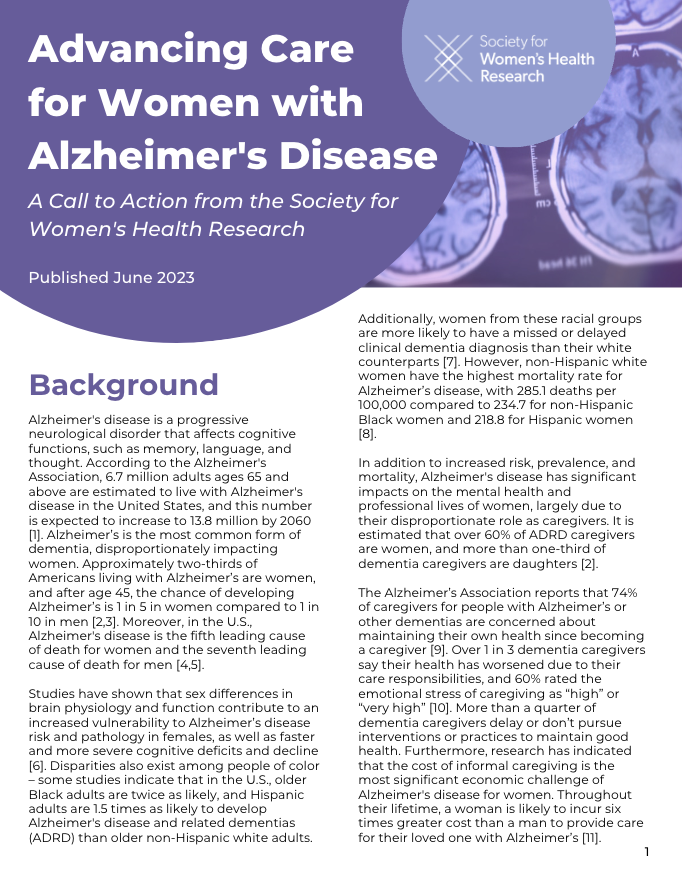Multiple factors contribute to incidence, morbidity, and mortality for Alzheimer’s and its disproportional impact on women and women’s health, including but not limited to biological sex, sociocultural influences, and insurance coverage.
Research Investment
The National Institutes of Health funded $1.79 billion in Alzheimer’s Disease research in 2018 (6.7% of its total budget). Of the 3015 research grants funded, 29 (<1.0%) projects focused on women’s health.*
*Women’s health focus was determined by searching the following key terms – Female, Gender, Maternal, Sex, and variations of Lactating, Pregnant, Women – in the project titles of all Alzheimer’s funded grants, according to the NIH Research, Condition, and Disease Categorization (RCDC) report.
Download the Full List of 2018 Nih-Funded Grants for Alzheimer’s Disease
Health Disparities
- Misdiagnosis of Alzheimer’s disease and other dementias is more common for Black and Hispanic people compared to their white counterparts [2].
- Japanese Americans have the lowest reported prevalence of dementia compared to all other ethnic groups [2].
Disease Burden
According to the World Health Organization Global Health Estimates, in 2018, Alzheimer’s disease and other dementias accounted for 2,267,188 disability-adjusted life years (DALY) lost, or a total DALY Rate of 51,848 per 100,000 individuals, among women 65 years and older in the United States [7].
Insurance Coverage
There are significant financial costs associated with medical care for individuals with chronic and/or degenerative diseases such as Alzheimer’s. Health insurance access and coverage are important for assisting with the financial burden. Below is a table displaying rates of insurance coverage for the states with the 5 highest mortality rates attributed to Alzheimer’s in 2018.
U.S. Health Insurance Coverage by State

Source: Kaiser Family Foundation Health Insurance Coverage of the Total Population (CPS), 2018 [8]
Uninsured: Includes individuals without health insurance and individuals who have coverage under the Indian Health Service only.
Employer: Includes individuals covered by employer-sponsored coverage either through their own job or as a dependent in the same household.
Non-Group: Includes individuals and families that purchased or are covered as a dependent by non-group insurance.
Medicaid: Includes individuals covered by Medicaid, the Children’s Health Insurance Program (CHIP), and those who have both Medicaid and another type of coverage, such as dual eligibles who are also covered by Medicare.
Medicare: Includes individuals covered by Medicare, Medicare Advantage, and those who have Medicare and another type of non-Medicaid coverage where Medicare is the primary payer. Excludes individuals with Medicare Part A coverage only and those covered by Medicare and Medicaid (dual eligibles).
Military: Includes individuals covered under the military or Veterans Administration.
N/A: Estimates with relative standard errors greater than 30% are not provided.
Caregiving Burden
- Over 1/3 of dementia caregivers are daughters [2].
- Caregivers who are women report higher levels of depression and worse health compared to caregivers who are men. These women are more likely to express a need for individual counseling (83% vs. 17%), respite care (72% vs. 29%), and support groups (73% vs. 27%) compared to caregivers who are men [2].






